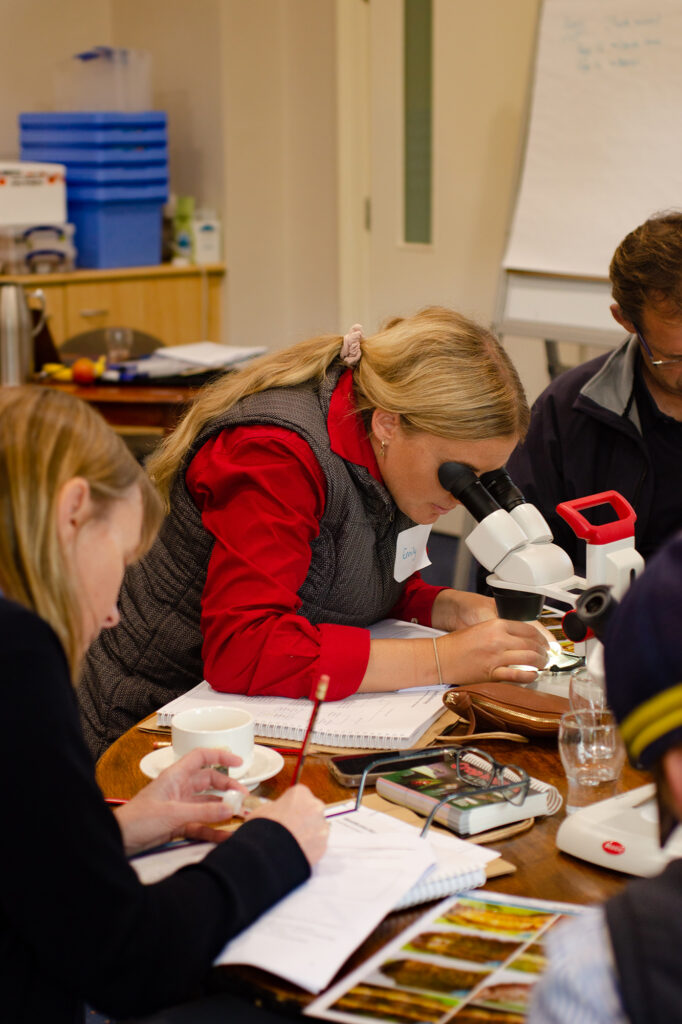Haven’t had the chance to attend one of our insect identification workshops yet?
The good news is we are scheduled to run two more before March 2024.
If you are thinking of attending, here’s a sneak peek at how the day runs and your chance to have a say about the next workshop locations and dates.
Workshop aims
Caterpillars are one of the most easily recognisable insect forms. The common name for the immature, larval stage of a moth or butterfly, most of us can spot a caterpillar when we see one, and from an early age are taught about their transformation into winged adults.
But have you ever wondered what defines a caterpillar and what makes them different from the larval stage of a beetle or a fly for example?
Or why aren’t spiders or mites actually insects?
Or how can you tell if a beetle will eat your pests or your crop?
As part of the GRDC-funded project IPMforGrains we’ve been running a series of insect identification workshops in Victoria and southern NSW. These are the type of fundamental questions of entomology that the classes begin with, before focusing on key pests and beneficial invertebrates found in broadacre winter grains crops.

Workshop curriculum
Our workshops are a combination of presentations and hands on practical sessions run by entomologists, research scientists and extension specialists from our team at Cesar Australia.
The day begins with learning about insect morphology, including mouthparts and feeding damage, and lifecycles. After establishing the fundamentals, we focus on moths, aphid, mites, springtails and beneficials for the remainder of the workshop.
All our workshop participants are provided with a hard copy of the ISpy Manual (Insects of Southern Australian Broadacre Farming Systems Identification Manual and Education Resource 2nd Edition). We use thes manuals to progress through a series of identification exercises using the taxonomic keys to identify real insect samples under a microscope.
The species covered in the workshop include some key pests relevant to south-eastern winter grains crops, including native budworm (Helicoverpa punctigera), green peach aphid (Myzus persicae) and redlegged earth mite (Halotydeus destructor).

Express your interest in attending
In the last year we have run workshops in Wagga Wagga, Horsham, Ballarat and Melbourne.
With two more workshop to go, we are interested in hearing about when and where we should hold our remaining two workshops; here’s your chance to have your say!
Once workshop locations and dates are decided, we will promote and request registrations through our PestFacts south-eastern emails so make sure that you are subscribed.
Cover image: Photo by Lilia Jenkins, Cesar Australia





